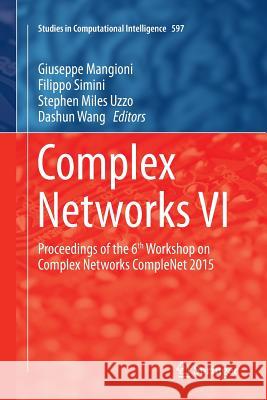Complex Networks VI: Proceedings of the 6th Workshop on Complex Networks Complenet 2015 » książka
topmenu
Complex Networks VI: Proceedings of the 6th Workshop on Complex Networks Complenet 2015
ISBN-13: 9783319386508 / Angielski / Miękka / 2016 / 232 str.
Kategorie:
Kategorie BISAC:
Wydawca:
Springer
Seria wydawnicza:
Język:
Angielski
ISBN-13:
9783319386508
Rok wydania:
2016
Wydanie:
Softcover Repri
Numer serii:
000318395
Ilość stron:
232
Waga:
3.75 kg
Wymiary:
23.5 x 15.5
Oprawa:
Miękka
Wolumenów:
01
Dodatkowe informacje:
Wydanie ilustrowane











